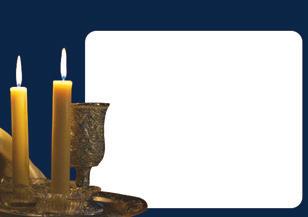


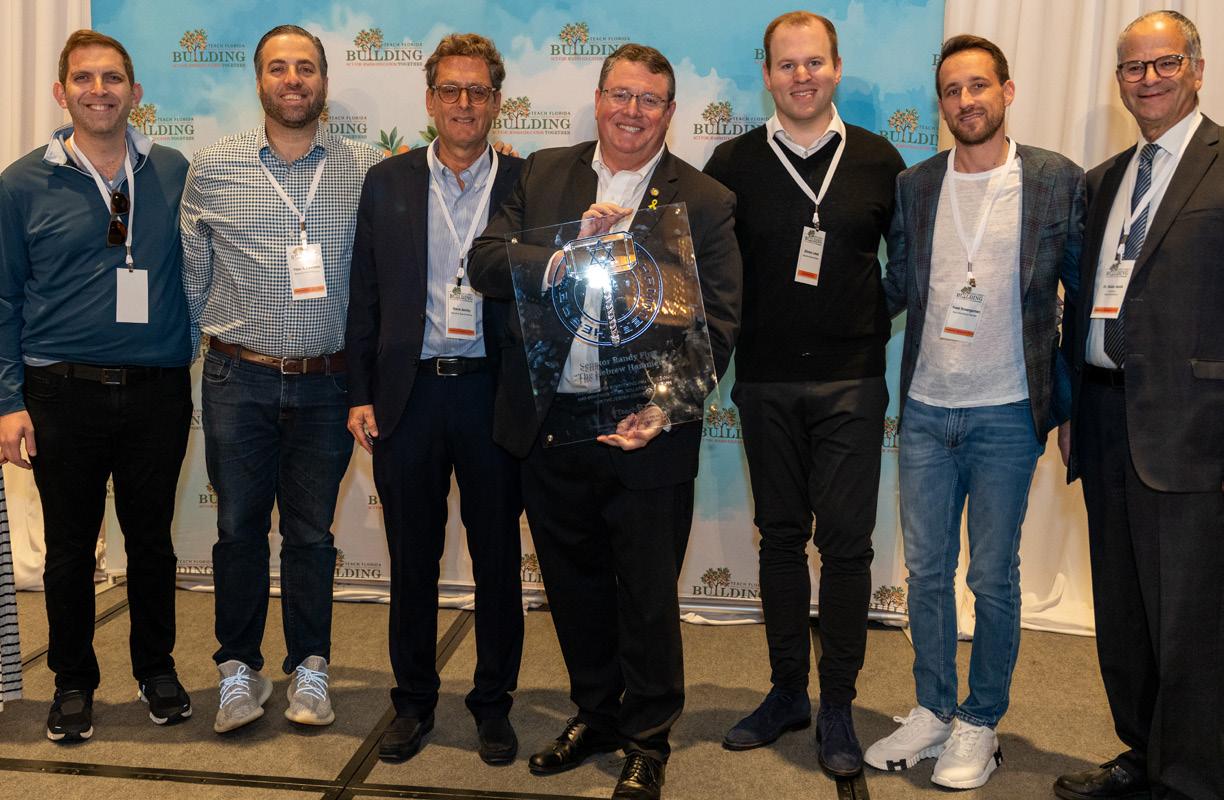



















































































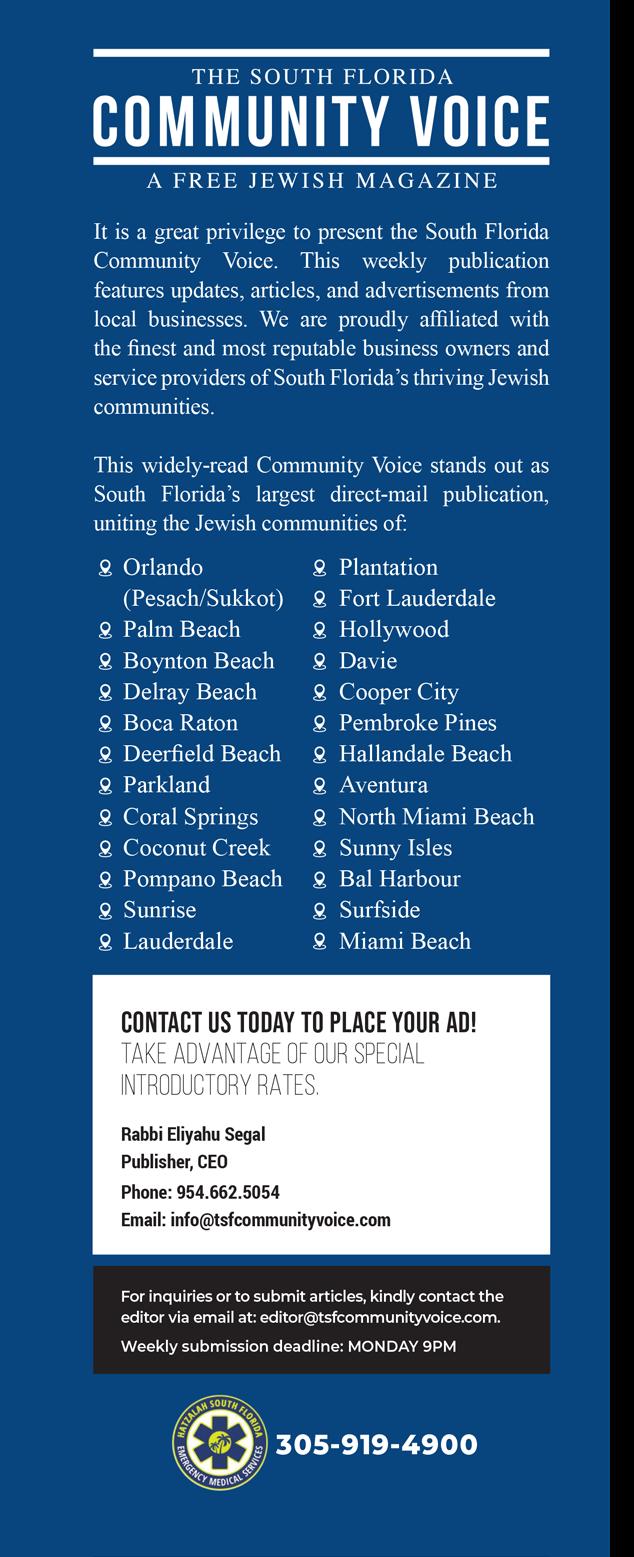



26

© The South Florida Community Voice Magazine. All rights reserved. Reproduction in printed or digital form in whole or in part in any form without prior written permission is prohibited. The publisher reserves all right to edit all articles for clarity, space and editorial sensitivities. Submissions cannot be returned to sender. The South Florida Weekly Magazine is not responsible for the cash flow of any advertised product or service that appears in these pages. The South Florida Community Voice Magazine assumes no responsibility for the content of articles or advertisements in this publication, nor for the content of books that are referred to or excerpted herein.

Shana
Michla


By Sivan Rahav Meir
Have you heard of PTG?
This week we are starting to read Sefer Shemot. Whereas Sefer Bereishit tells the story of a family, Shemot tells the story of how this family becomes a nation, the Jewish people.
In our Torah portion it is written: “But as much as they would afflict them, so did they multiply and so did they gain strength.” In other words, the more the Egyptians abused us and subjected us to hard labor with the goal of breaking our spirit, the more we grew and gained strength. By clinging to our identity and to one another, we were not only able to survive— but to flourish.
There is a psychological term that I first heard from Rav Aharon Darmon, which I believe is especially relevant for us today: PTG, Post-Traumatic Growth — a positive change that occurs as a result of trauma. PTG doesn’t just mean resilience, the ability to return to our daily routines and to normal functioning. It means emotional growth that takes place as a result of the trauma itself. PTG is a treatment goal that aims to help patients achieve higher levels of personal growth that they could not have achieved without suffering the trauma.
Sefer Shemot shows us that PTG — our ability to grow from trauma — has been part of our coping mechanism for thousands of years. For example, after the Holocaust the Jewish people

did not sink into despair and paralysis, but continued to grow and to advance in all areas — and even to establish a state of their own in their ancestral homeland.
Try to absorb the words of this powerful verse, “The more they afflicted them, the more they multiplied and gained strength,” and think how we can apply this idea to the challenges we face, both in our personal lives and on the national level.
May we increase our strength by internalizing and connecting to this coping mechanism that has served our people from the very beginning of our journey.
Ever since I read this idea, written by Moshe Shimon Ofen, I noticed that it changed my
behavior. This week’s Torah portion tells of the Hebrew midwives, named Shifrah and Puah. Despite Pharaoh’s wicked command to kill the Jewish newborns, they refused to obey him.
The commentator Rashi draws attention to their special names: Shifrah comes from the word leshaper, to improve. She improved the appearance of the newborn. Puah is an onomatopoeia: she coos and speaks to the newborn, as women who soothe a crying baby. They were not just midwives doing their job. They did much more: hugging, caring, smiling, and playing “peekaboo” with the baby. In the midst of enslavement, a warm and pleasant midwife brought joy to the mother and her baby. They were great women not only by virtue of their refusal to carry out Pharaoh’s murderous command, but also because they added a smile and a kind word, amidst the hellish Egyptian exile.
The message is clear: It’s not just what we do, but how we do it, not only under pressure, but also in our day-to-day lives. Shifrah and Puah are a reminder to all of us, to try and add to our daily actions – at home, at work, on the road, and everywhere – a smile and a pleasant manner.
I have recently come to the conclusion that the Jewish world needs to be a ‘safe space’ now.

There are so many challenges, both physical and emotional, and most are not visible from the outside. Think about the wife of the injured soldier, the cousin of the kidnapped kibbutznik, the student of the educational counselor who was murdered this week — on the street, you would never know what they are experiencing.
Hila Tamir Adar, a social worker, approached me and discussed her notion of expanding the safe space. During Covid, she worked closely with people with disabilities who were informed about the deaths of their loved ones. Since then, she has dedicated her thesis to this issue. She’s traveled to Europe to study the field, and developed a project called, “The Bitter News.”
How do you inform a person with cognitive and developmental disabilities that their family member was murdered or kidnapped during Simchat Torah? How do you explain to them issues like death, funerals, shiva? Hila initiated a protocol for all caregivers, from doctors to IDF officers, and it is important to her that it reaches the wider audience.
Hila connected me with Yael Keidar, 41, a resident of Kibbutz Be’eri, with mild intellectual disabilities. On Simchat Torah, she had been staying at the home

of her parents, Ofra and Sami, both of whom were murdered. She stayed in the safe room for long hours until she was rescued. The body of her mother is still being held by Hamas.
Hila recounts that Yael’s parents had set up a therapeutic farm for her at the kibbutz and always gave her a sense of independence. “It’s amazing to see how the empowering sentences they told Yael all her life, give her strength now,” Hila said. “Ofra was a cheerful and hardworking woman who loved sports and gardening, and volunteered at the kibbutz’s pet corner. She is a model for parents with a child who is not ‘according to the book.’
Her healthy worldview towards Yael is simply inspiring.”
The motto “Together we will win,” says Hila, includes also people with disabilities. About a month and a half after October 7, she held a farewell ceremony with Yael at the family’s burned house. “As long as there was no official funeral, Yael feels that the event is not over. She doesn’t fully understand. That’s why it was important to initiate this ceremony, to enable her to part respectfully and give her closure.

On Sunday, January 5th at the Museum of Jewish Heritage in NYC, the Jewish Orthodox Women’s Medical Association (JOWMA) held its 5th annual conference and dinner, “Transforming Healthcare: Innovation & Research.” Over 500 attendees from the medical field, government, and Jewish community came together for a day of education, community service, and empowerment.
The conference kicked off on Sunday morning with the Volunteer Recognition Ceremony, recognizing the critical work of JOWMA volunteers in the Jewish community. Conference attendees got an early start to the program as they heard introductory remarks from Avital Chizhik-Goldschmidt, Writer and Rebbetzin of Altneu Synagogue in the Upper East Side, who spoke about the critical role JOWMA members serve as medical experts and Jewish women leaders.
Some of the back-to-back session titles included, “Hope, Hype or Hazard? The Promise and Perils of the Psychedelic Revolution,” “The Evolving Landscape of Cesarean Scar Pregnancy,” “Undiagnosed & Untreated: Focus on Women’s Health through the LSD Lens,” and “Weight Loss Unpacked: A Multidisciplinary Panel Discussion.”
Attendees had the privilege of hearing keynote addresses from Michelle Morse, MD, acting commissioner of NYC Department of Health and Mental Hygiene, and James V. McDonald, MD,
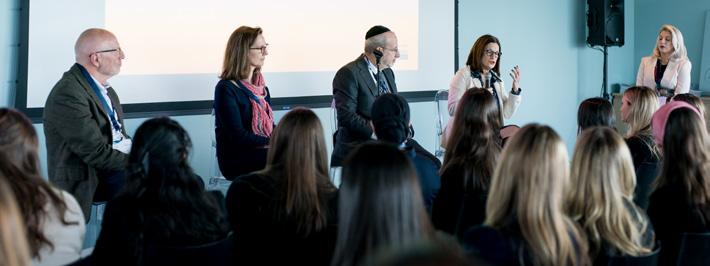

MPH, Commissioner of New York State Department of Health. Dr Mcdonald met with JOWMA leadership for a private meeting to discuss critical health issues facing the Jewish community.
“JOWMAisagreatpartnerofthe NewYorkCityHealthDepartment, and we remain thankful for their commitment in supporting a healthier New York City. Shared experience builds an immediate foundation of trust, especially for patients who don’t often find providers that come from their community. That trust can quite literally be lifesaving,” shared Dr. Morse. “The 2025 JOWMA annual conference made it clear that JOWMA members offer a sense of community and trust not just to theirpatients,buttooneanother.”
During the panel moderated by JOWMA CEO, Dr. Mimi Knoll, attendees enjoyed an inside look into “Public Health Forum: Innovative Approaches to Community Health Challenges” with NYC Council Members Julie Menin (District 5), Mercedes Narcisse (District 46), Lynn Schulman (District 29) and Dr. McDonald.
“I thank the Jewish Orthodox Women’s Medical Association for giving me an opportunity to participate in such a wonderful conference,”NYStateHealthCommissioner Dr. James McDonald said. “Itwasapleasuremeetingsomany dedicated health care professionals,speakingwithaspiringmedical students, and sharing the mission and goals of the State Department















of Health for the new year. We appreciate our partnership with the Jewish Orthodox Women’s Medical Association to improve the health oftheJewishcommunity.”
Council Member Lynn Schulman added her perspective: “It was an honor to join the Jewish Orthodox Women’s Medical Association for their annual conference and engage in meaningful discussions aboutthecriticalrolepublichealth plays in our city. Our work in promotingaccessible,equitablehealthcare is more important than ever, and I’m committed to advocating for policies that support the health and well-being of all New Yorkers. Collaborating with dedicated professionals like those at JOWMA inspires us to keep pushing for a healthier,moreinclusivefuture.”
The conference also featured innovative programming geared specifically towards premed attendees, who heard from a panel of medical school admissions directors from Zucker School of Medicine at Hofstra/Northwell, Touro College and University System, Boston University Chobanian & Avedisian School of Medicine, and Renaissance School of Medicine at Stony Brook University. Premed students had the opportunity to participate in engaging roundtables to interact directly with the admissions directors to learn how to navigate the medical school application process, interview tips, personal statements, how to prepare for the MCATs and more. Participants enjoyed hearing first-hand accounts from JOWMA’s Medical Mission to Israel volunteers, who spent time in hospitals all over Israel after October 7th. JOWMA Israel chair Mira Hellmann-Ostrov, MD, led a

fascinating discussion with Ashi Salmon, MD from Israel’s Ministry of Health, Edward Bennet, MD, JOWMA Medical Mission volunteer, Catherine Reed, MBA, CEO of American Friends of Magen David Adom, and Yael Haalas, MD, Director of AJMA; all shared their experiences and their connection to the Mission.
The day concluded with JOWMA’s inspiring dinner, which honored Congressman Dan Goldman with the Community Guardian Award, Naamit K. Gerber, MD with the Mentorship Award, and Sara Rosanel, MD with the Physician Leadership Award.
“The empowerment at the JOWMA 2025 conference was unparalleled!” shared Dr. Rosanel. “Jewish physicians and trainees from diverse backgrounds gatheredwithonegoalinmind:toconnect so that we can better serve ourcommunity.JOWMAhasbeen my professional home since its inception, aligning with my values as a Jewish woman physician. It helped me navigate the complexities of training while having the support of an incredible group of women who’ve been through it all. Being recognized with the illustrious ‘Physician Leader Award’ was a true highlight of my career. I’m sogladIwasabletosharethismoment with my husband, Yossi, and my three children, Ariel, Zev, and
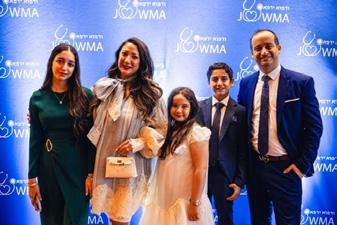
Shirley, who traveled from Miami and missed school and work to be with me. I will cherish this moment forever.”
Dr. Naamit Garber also expressed her gratitude, “It was so meaningful to be honored by JOWMA at their annual dinner. The video tribute, speeches, and the presence of so many family membersandfriendswereincrediblymoving.Ihopetocontributeto JOWMAforyearstocomeandam so grateful for all they have given meandthesupporttheyprovideto somanyfrumfemalephysicians.”
Dr. Sheindel Goldfeiz, PGY-1, Pediatric Neurology and COOCFO of JOWMA said, “The JOWMA Annual Conference and Dinner is a treasured opportunity—a day dedicated to uplifting one another as doctors, women, and members of the Jewish community. Every year, I am in awe of the extraordinary achievements and remarkable talent of our members. It’sanhonortocometogether,celebrate, and inspire one another in suchameaningfulway.”

The Florida residents are getting excited! The Rebbe is coming again. Hardly a year has passed since the Biale Rebbe of Bnei Brak has visited Florida, yet hundreds are excitedly anticipating the return of their revered Rebbe. Although the Rebbe has been visiting not one year and not two, but annually for some years now, every year the sensation repeats itself. Every year when the Rebbe arrives at the house where he lodges, the place becomes a public source of attraction as hundreds of people of various standards and types gather. The street becomes a hive of activity as lawyers, doctors, lay leaders, rabbis, educators, ranging from Hassidic to modern orthodox mingle as they flock to the Rebbe’s house. From early morning until the small hours of the night the streets resound with miraculous tales of unnatural miracles seen and experienced firsthand as a result of the Rebbe’s blessing. Everyone wants to understand, what is it that draws so many people to see the Biale Rebbe again and again? What is it that causes thousands of people from different backgrounds to seek the Rebbe? What is it that brings people with no semblance to Chassidim to cleave to the Rebbe with all their might, involving him in every move they take in life? At every occasion, be it happy or sad their first phone call is to include the Rebbe! What is it that unites young boys and elderly? What brings the famous ambassador of United States ,Mr. David Friedman, to visit the Rebbe? Many other prominent Rabbis and highly significant political figures from the American and Israeli government can be recognized amongst the Rebbe’s visitors anyplace between California, Florida, New York and New Jersey.
The shadchante is waiting for your phone call
A shy young couple waited to see the Rebbe. What was their story? The woman shared: “I was in shidduchim for years, and nothing was working out. Last year I heard that the Biale Rebbe was coming to New York. I made an appointment and waited along with everyone else. My turn came and I went in to the Rebbe, nervous with anticipation. The Rebbe told me, ‘Call the shadchante today; she’s waiting for your call.’ I had given up on calling shadchanim, but the Rebbe’s words gave me the push to try again. I decided to give it a chance and called a shadchante I knew. As soon as I called, the shadchante exclaimed, ‘Wow, it’s so bashert that you called now! I just got a name of a wonderful bachur who could be perfect for you. But if you hadn’t called, I wouldn’t have thought of calling you!’ This phone call made with the Rebbe’s brachah brought me my shidduch, and b”H we’re happily married for a few months.”
Your match is close, very close, you have no idea just how close. Another woman completes the above incident with a story of her own. I came to the Rebbe asking for a blessing for my daughter to find her destined. I just sat there and cried. The Rebbe said to me: “Don’t cry, your daughter’s match is very close. You have no idea just how close.” Several weeks passed and my daughter shares with me her good news. Baruch Hashem. Things start to get serious and before long we are celebrating her engagement to a wonderful boy. As my daughter relays the happenings of this shidduch I suddenly realize that this suggestion started on the very day the Reb-
be said to me: “It’s close, very close. You have no idea just how close.”
Tatty, we’re going to have twins
Leil Shabbos in Los Angeles. A large crowd came to the main shul to participate in the Biale Rebbe’s tisch. A respectable-looking lawyer walked in with cartons of wines and beer. People were curious what this was about, and he shared: “A year ago I was at the Biale Rebbe’s tisch in this shul. The Rebbe gave out shirayim—arbes from a shalom zachor that was held at the tisch. The Rebbe gave me arbes in my hand and told me, ‘You will have twins.’ I was surprised, to say the least. A short while later there was good news. My ten-year-old son, who was at the tisch with me, told me, ‘Tatty, I know that we’re going to have twins!’ I forgot about the whole story, and my son reminded me of what the Biale Rebbe had said. Now I’m bringing l’chaim to celebrate the birth of our twins!”
I got engaged after the tisch
The story didn’t end there. A young man stood there and shared his story: “I was also at the tisch a year ago and got shirayim from the Rebbe. The Rebbe told me, ‘Mazel tov! You’re getting engaged!’ I was dating then and wasn’t at all sure where things were heading. After the Rebbe’s brachah everything went quickly, and ten days later we were engaged! Now I came to the tisch with my wife to get a brachah for the Rebbe for a happy life together.”
I was sure I was finished, but the Rebbe saved my life
When a person has a million dollars it’s not enough; they want more and more. Sometimes it works and sometimes… that happened to me. At a young age I joined my father’s business and right away I wanted
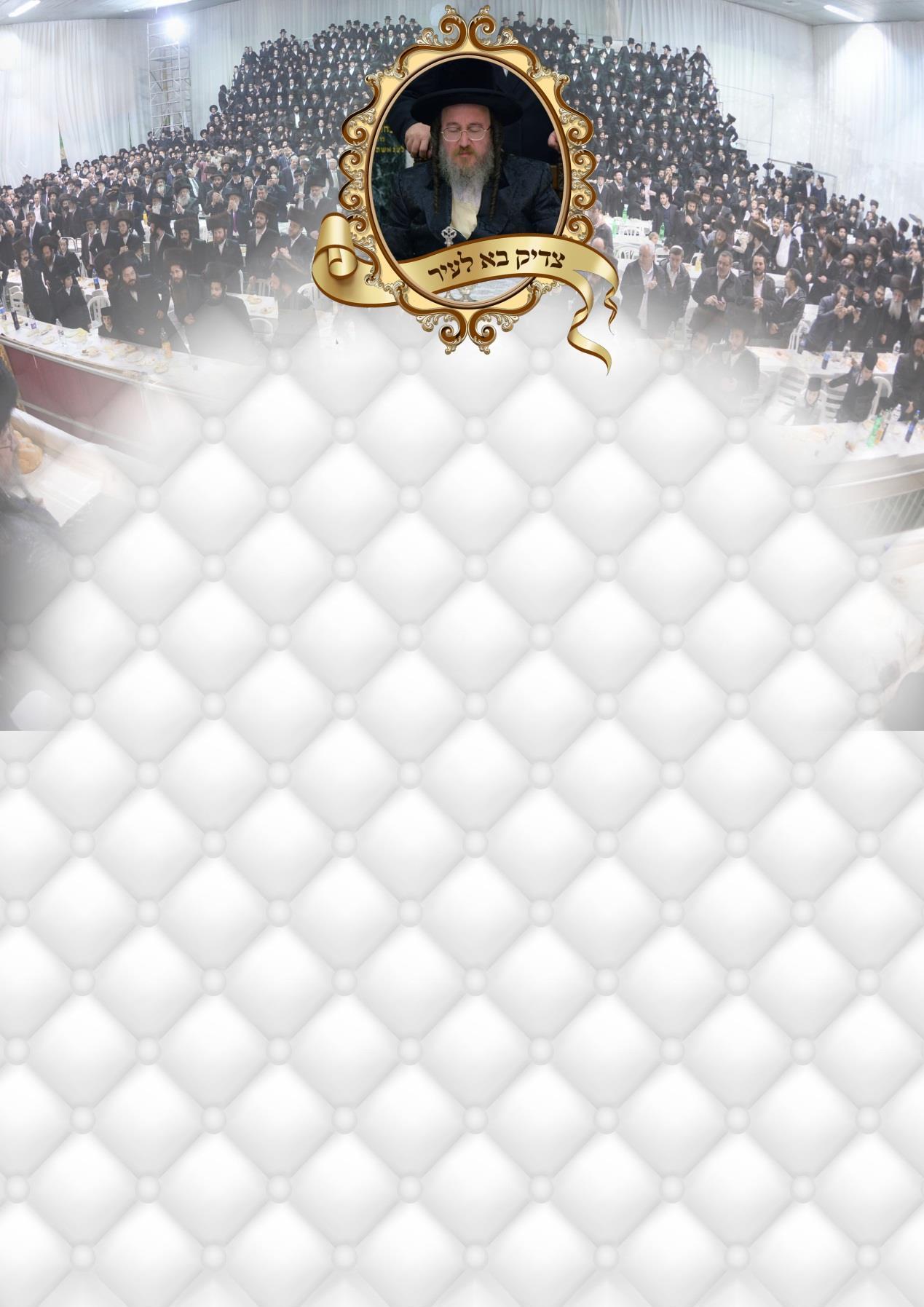
the whole world: another property, another purchase. My portfolio grew, and the bank gave me loans and I continued buying and buying, until… one day the bank foreclosed my account, without advance warning. The bank saw that my income wasn’t exceeding my expenses and seized everything-everything. Nothing I said, none of the grand plans I had, nothing helped. I was embarrassed to leave my house. I ruined my life, I finished my father’s whole fortune that he worked on for decades… I was totally depressed. On Friday night I went to shul near my house and I saw a commotion outside. A guest came: the Biale Rebbe! There was going to be a tisch at my neighbor’s home. My neighbor practically forced me to come, promising it would be worth it. Before Kiddush the Rebbe spoke, and I felt he was talking to me. The Rebbe said that even when everything seems black, even when a Yid thinks he lost everything, if he strengthens his emunah then he’ll never be alone, and there is a way out of every situation. I felt that the Rebbe was talking only to me. To make a long story short, with the Rebbe’s brachah and help, I came to be one of the greatest sponsors of the Rebbe’s mosdos and got out of the deep muddle I was in. I am now back in real estate and I remember to give maaser from all of my profits. I thank Hakadosh Baruch Hu for sending the Rebbe to me to extricate me from my predicament.
Twenty-two years ago, The Rebbe was barely in his early thirties when the yoke of leadership of Biale Chassidus Bnei Brak was thrust upon him. His greatness and guidance reached far beyond the borders of Bnei Brak as the Rebbe chose to draw his brethren from all over the world close to him by encouraging and helping them. The Rebbe
is leader and mentor of a most respectable chassidus which is centrally based in Bnei Brak and has branches in Jerusalem, Beitar Eilit, Ashdod, Bet Shemesh and Modiin Eilit. This has added a new \old hue to the leadership of Biale chassidus. Every day hundreds of people from varying backgrounds, Sephardim and Ashkenazim alike. Ultra-orthodox and those who have just donned a kippa, from Cholon to Bat Yam, Beer Sheba to Eilat, all stream to one address. The Rebbe opened his door and his heart to the whole of klal yisrael. Welcoming them with his compassionate heart and warm smile. People enter his room carrying a heavy load of troubles and worries however when they leave they are lighthearted and hopeful.
Biale Chassidus’ holy lineage stems from a holy sage named Rabbi Yaakov Yitzchok from Peshischa. This revered tzaddik lived some two hundred years ago and was known to all as the “holy Jew” – ‘The Yid Hakadosh’ from Peshischa. He was a disciple of the holy “Chozeh of Lublin” who was a direct fourth descendent of the holy Baal Shem Tov. The Yid Hakodosh was the greatest of Polish Rabbis, Rabbi to the leaders of Gur, Kotzk, Alexander and other great luminaries. Generations of tzaddikim in succession continued the tradition of the “Yid Hakodosh”. This chain was continued from father to son until the flame was kindled in our generation by the holy tzaddik and Rebbe – Reb Yechiel Yehoshua from Biale, may his holy memory be blessed. He was the grandfather of our revered Rebbe, a direct descendent of five generation to the Yid Hakodosh.
The Chelkas Yehoshua Prewar Poland boasted of the Rebbe’s grandfather, Reb Yechiel Yehoshua Ztk”l as one of its’ greatest leaders. However, his fame reached a pinnacle during the terrible hol-
ocaust when he uncompromisedly sanctified Hashem’s name, first in occupied Poland and later in the freezing Siberia. When he reached Israel all the great Rabbis acknowledged him as a great tzaddik. He was defied and honored as an angel in a mortal world.
The Lahavas Dovid
Next in line was the Rebbe’s father, the holy Rabbi Dovid Mattisyahu ztk”l. he was renowned and famous for his purity and greatness. During his lifetime his father appointed him as head of yeshivas Biale. During his travels throughout the world he revived the broken hearted with his moving prayers and heartfelt talks. People were drawn to him from afar. His tall handsome profile reminded many of his holy father’s image.
The Rebbe continues to tow this beautiful golden chain. However, he does not suffice with leading his own community. He is concerned about the welfare of all of Klal Yisrael. Several times a year he leaves the comforts of his home and visits countries and communities where no other Chassidic Rebbe has ever there. before. He embraces those who have strayed. He strengthens, encourages, motivates and directs until another Jew has found his way back to our Father in Heaven.
If every year before Pesach the Rebbe is busy helping widows and orphans, this year, since the start of the war on October 7, the Rebbe can’t sleep at night. The Rebbe says Tehillim every day together with the yeshivah bachurim, so that the Biale chassidim finish the entire Tehillim every day on behalf of the hostages and soldiers, who are fighting for am Yisrael. Every day, soldiers on their way to battle come with their parents for a brachah from the Rebbe. The Rebbe takes their names and doesn’t stop davening for their safety.
m o d e s t m a r k e t


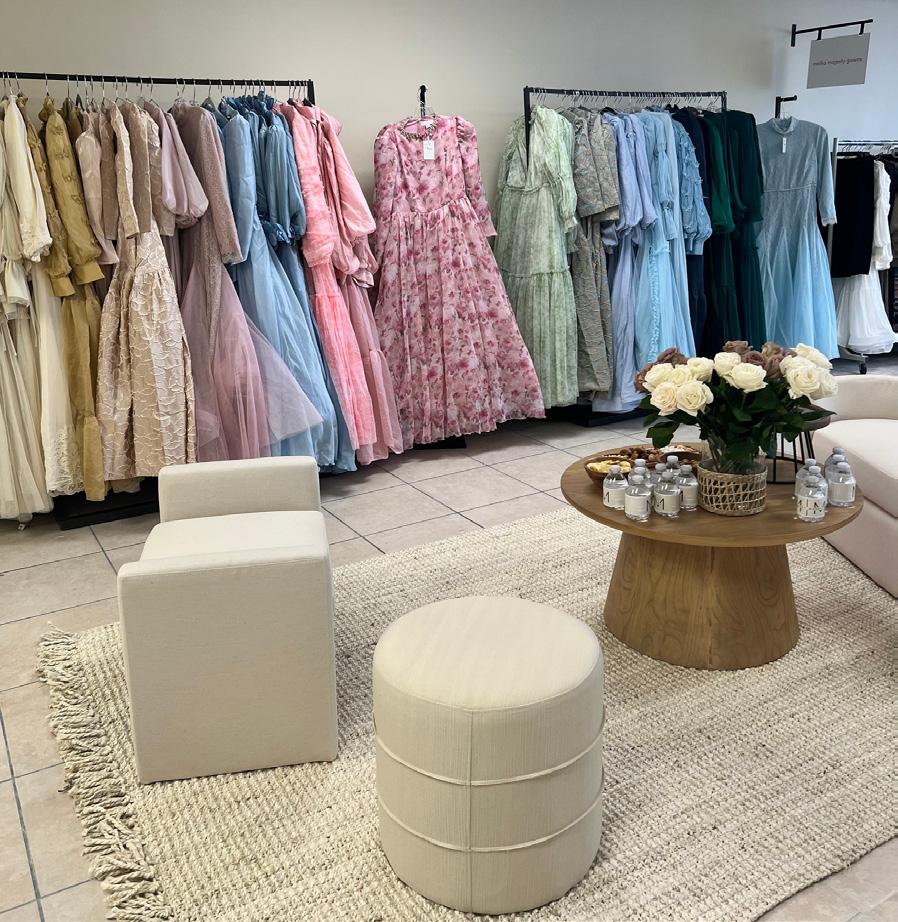


Biale’s chessed organizations have been there for the soldiers since the start of the war. Biala followers arrived at the meeting places in the north and south with containers full of meat and delicacies and held barbecue’s for the soldiers with singing and dancing when, Every soldier received a large care package before leaving for battle. Biale friends from around the world also sent vital supplies for the sodiers. We all hope and pray that all the soldiers come home safely with victory for am Yisrael.
The Rebbe’s institutions are famous throughout Israel. The center is based in Bnei Brak, and there are branches all over the country. However, his favorite project is the welfare of “his” orphans. The Rebbe is father to fifteen biological children and countless of grandchildren. However, hundreds of children throughout the world call him “Father”. Amongst the many institutions which are under his auspices is the Rebbe leads 2 yeshivas in Beitar Ilit called “Mishnat Shimon “ and “Iyun Htorah”. Batei Midrash and kollels for young men are spread out in Bnei Brak, Jerulem, Beitar Eilit, Modiin Eilit, Ashdod and Beit Shemesh. However, the institution for widows and orphans are under the Rebbe’s direct administration. This fund supports the widows and orphans.
The desolate orphans receive everything they need of the best quality and quantity. This includes clothing, shoes, scholarship, dorm service and of course pocket money. All this is naught compared to the personal attention the Rebbe bestows upon them. As far as the Rebbe is concerned they are his fully adopted children. His house is their house, their worries become his own. The Rebbe is following after their studies and makes sure they
have personal tutors Point in case - the Rebbe who had just returned from a trip to the USA one Erev Pesach told his driver to take him to visit his orphans directly from the airport. His own family and children can wait – his orphans come first. Upon his arrival the Rebbe gave each orphan gifts and pocket money enough for everything he needs for yom tov. Only then did he make his own way home to his family and yom tov preparations.
The Rebbe knows!
A couple enters the Rebbe’s chambers, both have written a request with their names and the names of their children. Each name had a different request. One was having trouble in school another needed help in his business. The Rebbe looks on the kvittel and tells the husband “you should take a walk with your wife once a week! if you will respect your wife your problems will be solved. The woman burst out crying. This is the first time they meet the Rebbe, and he is aware of everything going on between the couple. The Rebbe is unconcerned about the tens of people waiting outside and patiently expounds on the importance of domestic peace. The Rebbe gives them detailed instructions how to bring their hearts closer. The Rebbe tells them that the key to happiness and success as well as nachas from their children lies in the respect shown between the parents. And so, another couple exits with a happy smile on their faces. After a while the Rebbe’s secretary receives a note from the wife saying: the Rebbe saved our marriage!!!”
THE REBBE’S LODGING: These days are happy days for the residents of Florida as they are anxiously preparing to meet once again with their beloved Rebbe. The Rebbe will be staying in Florida from Thursday February 1 at the house of the Felberbaum’s, at 5089 SW 33RD
WAY, FT. LAUDERDALE FL 33312 (in OAKRIDGE).
ONEG SHABBAT & TISH FRIDAY NIGHT IN FT LAUDERDALE ON JANUARY 24
ON Shabbos January 24 will be held an amazing “Oneg Shabbos” tisch which the Rebbe will hold Friday night. The great Tisch will take place on Parshas Vaera on the At the residence of MR. & MRS. ARYE & NECHAM FRIEDMAN, at 5744 ASHWOOD CIRCLE. FORT LAUDERDALE, at 9.00 pm.
The most special part of the tisch is during the famous kiddush which the Rebbe performs. It is well known that the Rebbe’s kiddush is capable of bringing about great miracles. The emotive singing and dancing at the Rebbe’s tischim elevating its participants to a standard of “maeyn oilam habah!” this will follow with an abundance of divrei torah and hashkafah.
From Monday –Thursday February 27-30 in BOCA RATON
The Rebbe will be staying in Florida from Monday January 27 at the house of the honorable host MR. & MRS. STEVEN & SHARON LANGERT at 9826 PALMA VISTA WAY BOCA RATON, FL.
THE REBBE WILL BE STAYING IN FLORIDA UNTILL FEBRUARY 12 BE”H, FOR INFO ON THE DATES IN MIAMI BEACH, BAL HARBOUR OR AVENTURA PLEASE CALL THE NUMBER BELOW
Now the residents of Florida have this unique opportunity. If you have not yet had the merit of meeting the Rebbe and would like to book an appointment for a personal consultation a blessing or advice call the Rebbe’s private secretary now! (English speaking) telephone no. call or text 917-272-4045. Or WhatsApp 516231-0379
Or send an email to bialebneibrak@gmail.co

Rabbi Berman to be the 10th Rabbi to participate in a presidential inauguration and only the third to ever deliver the Benediction
January 13, 2025 – New York – Yeshiva University, the nation’s flagship Jewish university, today announced that its President, Rabbi Dr. Ari Berman will deliver the Benediction at the 60th U.S. presidential inauguration on the steps of the Capitol in Washington D.C. on January 20th.
Rabbi Berman’s blessing, immediately following President Trump’s inaugural address, will call for the nation to rise to this historic moment and unite around America’s foundational values as a source for realizing our shared dreams of a prosperous, compassionate country led by faith and trust in God. Rabbi Berman is the first American-Israeli to deliver remarks at a presidential inauguration, during which he will also pray for the wellbeing and safe return of the hostages who remain captive in Gaza.
Notably, at a time of great disruption on college campuses, Rabbi Berman will be the only university president delivering remarks during the ceremony and will speak to the aspirations of faith based and values driven universities across the nation.
Rabbi Berman said, “On behalf of Yeshiva University I am deeply honored to have been asked to deliver the Benediction at this momentous time. As I prepare

my remarks, I am inspired by the words of the prophet Jeremiah, who thousands of years ago walked through the roads of Jerusalem, the eternal capital of Israel, and proclaimed ‘Blessed is the one who trusts in God.’ I pray that we are all united around the core values of life and liberty, of service and sacrifice, and especially of faith and morality,
which George Washington called the ‘indispensable supports’ of American prosperity.”
Ira Mitzner, Chairman of Yeshiva University’s Board of Trustees, said, “Having Rabbi Berman deliver the Benediction is a testament to his leadership and to the prominence of Yeshiva University. As the nation’s

flagship Jewish university, with an unwavering commitment to Torah values and academic excellence, Yeshiva University is a leading institution of higher education that is readying the next generation to contribute to society and live their most fulfilling lives. Never before have our mission and our presence been more important.”
Rabbi Berman’s Bio:
Rabbi Dr. Ari Berman is President of Yeshiva University, a global thought leader, educational visionary and a unifying force for faith and academia.
Rabbi Dr. Ari Berman is the fifth president of Yeshiva University. Since the beginning of his tenure in 2017, Rabbi Berman has anchored the university on the twin pillars of academic excellence and values-based education, guiding it into a new era of growth and innovation as a global leader in higher education.
Under his leadership, Yeshiva University has flourished. The university has launched over 20 new degree programs and four new academic centers, increased graduate school enrollment over 100%, achieved record high undergraduate applications, established a new Health Science Campus in midtown Manhattan, more than doubled annual philanthropic giving, and has already secured $520 million of The Rise Up Campaign for $613 Million—publicly launched just three years ago.
Beyond campus, Rabbi Berman has emerged as a national leader for moral clarity and higher
education. He founded a coalition of over 100 university presidents united against terrorism following the October 7th attacks in Israel and led the first-ever delegation of university presidents on the March of the Living to Auschwitz. A founding member of the ACE Commission on Faith-Based Colleges and Universities, Rabbi Berman helped bring together leaders from institutions such as Notre Dame, Baylor, Pepperdine, and Brigham Young University to advance access, affordability, and innovation in higher education while highlighting the essential contributions of faith-based institutions across the broader educational landscape.
A global faith leader, Rabbi Berman bridges diverse communities. He delivered the keynote address at the first Holocaust Commemoration Day in an Arab country in Dubai; presented a nationally viewed address at Brigham Young University on the transformative power of education; led a sustainability forum in Abu Dhabi promoting interfaith peace; joined global leaders in Hiroshima to champion human dignity in AI; and delivered the prestigious Hildesheimer Lecture in Berlin, analyzing the legal and historical intersections of Jewish and non-Jewish communities and presenting a hopeful vision for the future.
A sought-after speaker and thought leader featured in major media, Rabbi Berman holds four degrees from Yeshiva University and a doctorate in Jewish Thought from the Hebrew University
of Jerusalem. He is married to Anita Berman, and they have five children.
As the flagship Jewish university, Yeshiva University is animated by its five core Torah values: Seek Truth (Torat Emet), Live Your Values (Torat Chaim), Discover Your Potential (Torat Adam), Act With Compassion (Torat Chesed) and Bring Redemption (Torat Tzion).
Founded in 1886, Yeshiva University brings together the ancient traditions of Jewish law and life, and the heritage of Western civilization. More than 7,400 undergraduate and graduate students study at YU’s four New York City campuses: the Wilf Campus, Israel Henry Beren Campus, Brookdale Center, and Jack and Pearl Resnick Campus. YU’s three undergraduate schools – Yeshiva College, Stern College for Women, and Sy Syms School of Business – offer a unique dual program comprised of Jewish studies and liberal arts courses. Its graduate and affiliate schools include Albert Einstein College of Medicine, Benjamin N. Cardozo School of Law, Wurzweiler School of Social Work, Ferkauf Graduate School of Psychology, Azrieli Graduate School of Jewish Education and Administration, Bernard Revel Graduate School of Jewish Studies, the Katz School of Science and Health and Rabbi Isaac Elchanan Theological Seminary. YU is ranked among the nation’s leading academic institutions.
For more information about Yeshiva University and Rabbi Berman, please visit www.yu.edu.


















On Sunday, Teach FL, a division of Teach Coalition, national nonprofit dedicated to advocating for government funding and resources for nonpublic schools, hosted its annual legislative breakfast in Hollywood, Fl. The event drew over 900 guests, including state legislators and Jewish community leaders.
At the breakfast, Florida Jewish community leaders had an opportunity to connect with elected officials who make critical decisions about state scholarships and security funding. The event also highlighted the critical issue of local zoning regulations – which are creating major barriers to new nonpublic schools opening in the state, at a time when demand has never been higher. This is an issue now being looked at in Tallahassee, with educational freedom, and creating an environment for it to thrive, a priority for the state.
“We have a big problem – the barrier to opening new schools –and we must fix this,” said Teach FL Director, Melissa Glaser. “In the next four years, there will be 2,000 Jewish children that will not be able to get a Jewish education.”
Teach FL represents over 60 Jewish Day Schools, and 12,000 students in the state and was at the forefront of advocating for the current universal state scholarship program – passed in 2023which provides, on average, $8,000 per child to attend the school that best suits their needs. Building on the success of this program,


































speakers addressed the possibility of a federal-level school choice program that may also soon be on the table.
“If we are going to be a society that does believe in educating children, then parents have to be at the front of the line of how their children are going to be educated,” emphasized keynote speaker Representative Byron Donalds, Florida’s 19th District. “We are at a critical time in the nation, in the history of this nation. The perk of the job is that you have a golden opportunity to not just pass bills, but to set the trajectory for the future. The perk of the job is when we get to finally start the process of bringing federal school choice to every child in the United States of America.”
Senator Randy Fine added, “There is no reason that universal school choice cannot be a federal right for every student in the United States. We did it in Florida. We can do it nationwide.”
Teach Coalition, a project of the Orthodox Union, is a nonpartisan, multi-state, grassroots movement devoted to advocating for equitable funding for nonpublic schools. Teach Coalition works to make nonpublic schools better, safer and more affordable. Teach Coalition advocates on behalf of approximately 90% of Jewish day school and yeshivah students nationwide and counts more than 90,000 dedicated volunteers, activists and subscribers among its supporters. For more information about Teach Coalition, visit teachcoalition.org.

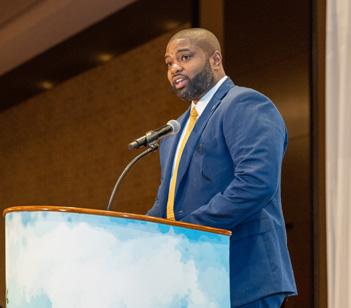

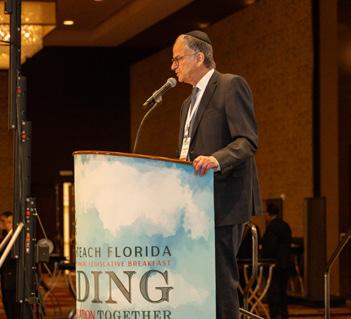
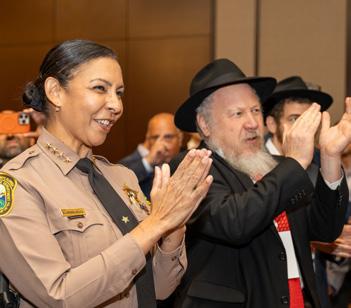
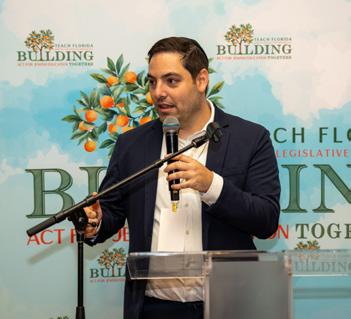





S t u d e n t s f r o m T h e J e w i s h A c a d e m y r e c e n t l y
h a d t h e p r i v i l e g e o f e n g a g i n g w i t h D r .
S h m u e l K a t z , a p r o m i n e n t I s r a e l a d v o c a t e
a n d c o - f o u n d e r o f t h e o r g a n i z a t i o n S t a n d
W i t h U s . H e d e l i v e r e d a c o m p e l l i n g t a l k
a b o u t I s r a e l a n d s h e d l i g h t o n t h e c u r r e n t
c o n f l i c t , e m p h a s i z i n g i t s u n i q u e n a t u r e a s a
b a t t l e o f i n f l u e n c e , m e d i a n a r r a t i v e s , a n d
p u b l i c o p i n i o n .
D r . K a t z e x p l a i n e d t h a t , w h i l e I s r a e l h a s h a d
t h e m i l i t a r y c a p a b i l i t y t o d e c i s i v e l y e n d s u c h
c o n f l i c t s i n t h e p a s t , i t h a s c o n s i s t e n t l y
c h o s e n a p a t h t h a t v a l u e s h u m a n l i f e a n d
e t h i c a l r e s p o n s i b i l i t y , s e t t i n g i t s e l f a p a r t f r o m
i t s a d v e r s a r i e s .

D r . K a t z a l s o u n d e r s c o r e d t h e s p i r i t u a l
d i m e n s i o n o f t h i s s t r u g g l e , d e s c r i b i n g i t a s a
" w a r o f t e f i l l a h " ( p r a y e r ) . H e h i g h l i g h t e d t h e
p o w e r o f k n o w l e d g e . S t u d e n t s c a n n o t b e
d e f e n s i v e a b o u t I s r a e l r a t h e r h e e x p l a i n e d
t h e d e t a i l s b e h i n d t h e c o n f l i c t a n d I s r a e l s ’
p o s i t i o n o n e v e r y i m p o r t a n t i s s u e i n c l u d i n g
G a z a , W e s t B a n k , S e t t l e m e n t s , T w o S t a t e
S o l u t i o n a n d s o m u c h m o r e .
T h e t a l k l e f t s t u d e n t s d e e p l y i n s p i r e d ,
o f f e r i n g t h e m a b r o a d e r p e r s p e c t i v e o n t h e
c o m p l e x i t i e s o f t h e s i t u a t i o n a n d t h e i r o w n
p o t e n t i a l t o c o n t r i b u t e t h r o u g h a d v o c a c y ,
u n d e r s t a n d i n g , a n d s p i r i t u a l s o l i d a r i t y .





Despite the title of this column, it is not about bullying. In fact, it’s quite the opposite – sort of. But let’s start at the beginning, which is always a good place to start. So much better than starting at the end.
On Chanuka, one of the lights on my Menorah went out. I wanted to check the wick and oil and relight it, so I picked it up to try. Big mistake. You see, when things are on fire, they get hot, as any Californian can attest. And, just because the fire goes out, doesn’t mean the heat is instantly gone.
Now, the normal thing to do when holding something hot is to drop it. Alas, when it’s hot oil, that’s not such a good idea. So, I carefully put the hot glass cup down in the Menorah, and went to the kitchen to run my finger under cold water. The damage was done, though, and I developed a large blister on my finger.
Over the next day, the blister grew and swelled up. I wanted to pop it, but through a careful search of applicable medical practices under the auspices of Dr. Google and his staff of AI nurses, I found that I should not pop it under any circumstances. It would protect the skin underneath as it healed. OK, so I didn’t pop it.
Over the next few days, I watched the blister change. It was less puffy, softer, and more prone to breaking. [I apologize if I’ve triggered anyone’s vasovagal response, but there is a point coming.] Eventually, the blister was no longer swollen and the skin began to dry out. The finger was normal in shape, with the unusual oval of skin noticeable. It became cracked and I watched, in awe, how Hashem made the body heal itself in various stages.
By Rabbi Jonathan Gewirtz
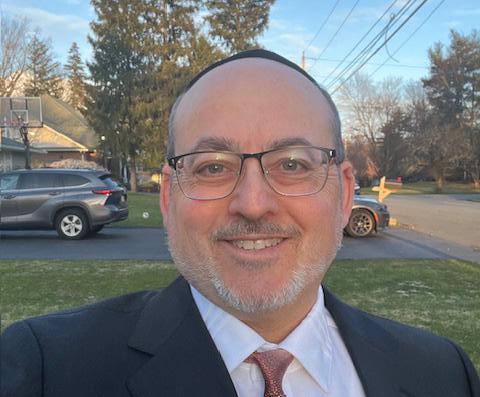
Now, after a few days of watching this with only minimal changes, I began to get impatient. OK, MORE impatient than I had been. I saw the skin drying and cracking and decided to help it along. I picked at it. I know I should not have but I couldn’t help myself. At first, I just scratched a little, but over the next few hours I ended up removing the dry skin, leaving tattered edges, which, by the way, caused some discomfort as well when they brushed against things. Again, I apologize for the graphic nature of this explanation, but it’s important to the story.
The next morning, I inspected my finger. I noticed the skin underneath was a bit redder than the flesh around it. And you know what? It was tender to the touch! It kind of made me think that perhaps I should have left the healing process to Hashem, and not tried to “help it along.” All I did was interrupt the natural healing Hashem created for my body, not make things better.
And I was struck with a thought. So often, we do things that aren’t the smartest. We make decisions or behave in a way we shouldn’t. We do damage to our souls and probably change the trajectory of our lives. Hashem sends us the pain signals to
let us know we ought to stop doing what we’re doing, and then the healing process begins.
But it’s slow, and while we’re waiting for the healing, we get annoyed by the itchiness or discomfort. We wonder why Hashem is “picking on us,” not realizing that this is the result of our own actions, and that Hashem is doing His part to make us whole again.
Then we try to help. We focus on dealing with the symptoms the way we think we should, and forget that there’s a healing process going on which is beyond our understanding. When things get even worse, or we wind up hurt or with an infection, we blame Hashem and don’t realize it’s because we didn’t leave well enough alone and we picked at the injury.
Yaakov Avinu complained that the brothers told the Viceroy they had a brother. The Midrash says, “Hashem said, “I am preparing Yosef’s kingship (and the precursor to the Exodus) and you are complaining?!” What Yaakov felt was a bad thing was all part of Hashem’s plan.
What a valuable lesson for all of us! When we feel pain and discomfort, whether it be from the people in the world around us via antisemitism, or in our personal lives from the various travails we experience, we ought to think back to the Midrash and remind ourselves that this is part of Hashem’s plan to heal the world and prepare it for the ultimate good. It just might make it a little easier to sit back and just watch.
© 2025 – All Rights Reserved
Did you enjoy this column? Feedback is welcome and appreciated. E-mail info@JewishSpeechWriter.com to share your thoughts. You never know when you may be the lamp that enlightens someone else.







Headline in leading Israeli newspapers on 24/11/2023:
“The bodies of hostages Ziv Dado, Eden Zechariah, Ron Sherman, Nick Beizer, and Elia Toledano were found in the tunnel of the Hamas Northern Brigade commander.”
These days, there is significant public interest and massive pressure for the release of the hostages. According to media reports, there has been substantial progress, and we all hope that the anticipated deal will come to fruition. I will share with you our brigade’s efforts on this crucial matter.
The involvement of the 551st Brigade in the issue of hostages began earlier, in the initial stages of combat in Beit Hanoun. Throughout our operations, we encountered signs indicating the presence of hostages—evidence found in Beit Hanoun, traces of blood in Hamas vehicles, and more. Although I cannot elaborate beyond what has been approved for publication by the IDF spokesperson, I will share the available details.


According to information released by the IDF spokesperson:
Upon summarizing the 551st Brigade’s operations in Jabalia, the Indonesian Hospital, Sheikh Zayed neighborhood, and Jabalia refugee camp, the IDF revealed new details about the complex mission to locate the remains of five Israeli hostages who were murdered in Hamas captivity: Warrant Officer Ziv Dado, Sergeant Ron Sherman, Private Nick Beizer, Eden Zechariah, and Elia Toledano. The findings were presented to the families by IDF representatives.
According to the debriefing, the first two bodies were discovered in December 2023, followed by three more in the following days. The operation took place within a one-square-kilometer area controlled by a major Hamas command center. The forces searched tunnel shafts extensively to locate the correct one leading to the bodies. During the battles, the brigade suffered 21 fallen soldiers.
Troops from the 551st Brigade, alongside special intelligence and engineering units, identified a critical lead pointing to two shafts in Jabalia refugee camp and its northern outskirts, where the bodies were eventually found. After recovering all five remains, the forces continued underground operations, repelling terrorist attempts to regain control of the area.
In December 2023, during ongoing operations in northern Gaza, the brigade established control over Sheikh Zayed. After gathering intelligence, efforts were concentrated on infiltrating the refugee camp. Inside the camp, they located a tunnel containing command rooms, prayer chambers, and an elevator leading to Hamas’ Tel Katiba base.
We recognize the immense responsibility and moral duty that this mission carries. The importance of returning our people to their homeland is a guiding principle that we are deeply committed to. With unwavering determination, we will persist in our efforts, ensuring that no effort is spared in the pursuit of this sacred task.
We will continue as long as necessary, in any place, at any time, and for any mission that supports the military’s efforts to bring the hostages home.










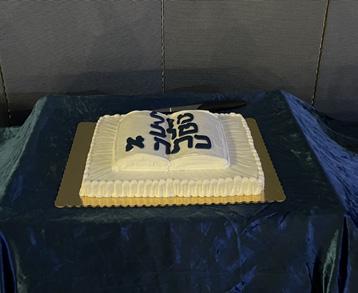




Credits: HebrewSchool.info




Learning to work in group
Credits: ChabadChayil.org/Preschool
ARE YOU ALREADY A MENTOR FOR TORAH MATES OR PARTNERS IN TORAH?
If not, have you considered it? Since the Oct 7th massacre last year with anit-semitism staring us in the face, thousands of unaffiliated Jews in America and across the world have begun searching for truth and meaning in life. Many more volunteer mentors are needed at all Jewish outreach organizations at record levels! This Shovavim, why not dedicate an hour a week to teaching Torah to these thirsting neshamos on a one-on-one basis? It's only a 6 week commitment.
Please reach out at Outreach. Jewish@gmail.com TODAY and let's take this revolution to the next level











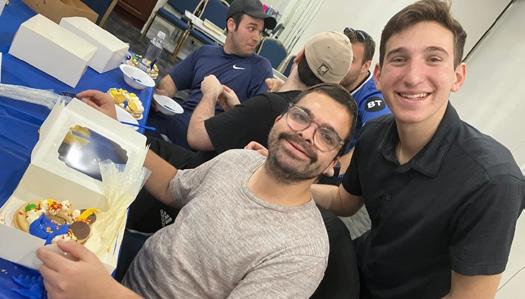
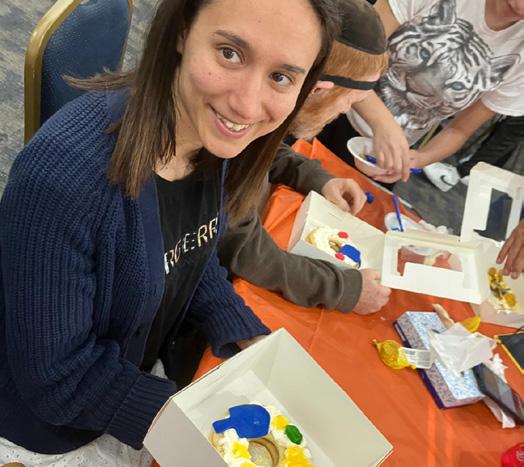
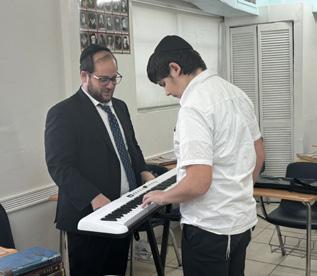
In addition to full Limudei Kodesh and general studies curricula, the Yeshiva offers several electives each semester. Here, music instructor Mr. Michael Sapoznik gives some pointers to a future star.

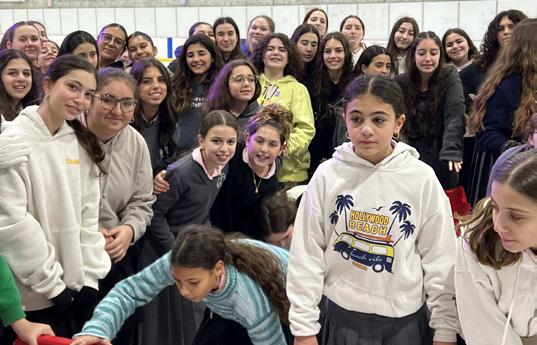

The Yeshiva was the recipient of a generous gift of Feigenbaum Siddurim by Mr. and Mrs. Kasriel Bistritz, dear friends of the Yeshiva. Especially geared for teenagers, its format truly enhances the boys’ davening. Rabbi Asher Goldenberg, Mashgiach, recently gave post-Shachris Chaburah based on the Siddur.

There’s always time for basketball! The
a

O R C ARE IN SO U TH FL ORI DA If you or your loved one needs care at home, Nautilus will match you with the perfect caregiver. We make sure every patient receives the personalized and tailored care they deserve, in the comfort of their own home.



By Dr. Sarah Rosanel, MD FACC, Concierge Physician in Miami Florida - Internal Medicine Specialist and Cardiologist
When it comes to heart health, understanding your lipid profile is key for prevention and treatment. Lipids, including cholesterol and triglycerides, play a vital role in the body, but imbalances can lead to cardiovascular disease (CVD). Let’s break down the essentials of lipids, how they’re managed, and what numbers you need to know.
The Key Players: HDL, LDL, and Triglycerides (TG)
1. HDL (High-Density Lipoprotein) - the “good cholesterol,” HDL helps transport excess cholesterol from the bloodstream to the liver for elimination. Higher levels of HDL are protective against heart disease.
• Optimal HDL: ≥60 mg/dL for women; ≥50 mg/dL for men.
2. LDL (Low-Density Lipoproteinthe “bad cholesterol,” LDL can deposit in the arterial walls, leading to plaque formation and narrowing of the arteries.
• Optimal LDL: <100 mg/dL for most; <70 mg/dL for those at high cardiovascular risk (e.g., diabetes, established heart disease).
3. Triglycerides (TG) These are fats stored in the body and used for energy. Elevated triglycerides are linked to increased cardiovascular risk.
• Optimal TG: <150 mg/dL.
When to Start Treatment Management decisions depend on lipid levels, cardiovascular risk, and the presence of other health conditions. The American College of Cardiology (ACC) and the American Heart Association (AHA) recommend:

Lifestyle Modifications for All:
• Diet: Focus on fruits, vegetables, whole grains, lean proteins, and healthy fats (e.g., olive oil, nuts).
• Exercise: Aim for at least 30 minutes a day of moderate-intensity aerobic activity or fast walks.
• Weight Management: Even a 5-10% weight loss can improve lipid levels.
Statins for Elevated Risk: Statins are the first-line treatment for lowering LDL and reducing cardiovascular events.
• Primary Prevention: Age 40-75, LDL ≥70 mg/dL, and a 10year ASCVD risk ≥7.5%.
• Secondary Prevention: For those with established CVD (e.g., heart attack, stroke).
• High-Risk Conditions: Diabetes, chronic kidney disease, or familial hypercholesterolemia.
• Triglyceride-Specific Management: For TG ≥200 mg/dL, intensify lifestyle interventions and consider omega-3 fatty acids or fibrates in addition to statins for TG ≥500 mg/dL to reduce the risk of pancreatitis.
A Simple Example: Meet Chaya Chaya is a 45-year-old working mother who recently had her annual check-up. Her lipid panel revealed the following:
HDL: 42 mg/dL
LDL: 160 mg/dL
TG: 220 mg/dL
Her doctor calculates her 10-year ASCVD risk at 10%. Based on these results, Chaya’s plan includes:
1. Lifestyle Changes:
• Adopting a Mediterranean-style diet with more fresh produce and less red meat.
• Walking 30 minutes daily after dinner.
2. Starting a Moderate-Intensity Statin:
To lower LDL by at least 30-50%.
3. Focusing on TG Reduction:
• Limiting sugary foods and drinks.
• Adding omega-3-rich foods like salmon and walnuts.
Numbers to Know
• LDL Targets:<70 mg/dL for highrisk individuals.
• TG Goals: <150 mg/dL to reduce cardiovascular and pancreatitis risk.
• Non-HDL Cholesterol: (Total Cholesterol - HDL) <130 mg/dL is another helpful marker.
The Bottom Line
Monitoring and managing your lipid profile is a lifelong journey. Lifestyle changes remain the foundation of heart health, but medications like statins can be lifesaving for those at higher risk. Partnering with your healthcare provider ensures a personalized plan to protect your heart.
Take Chaya’s story as inspiration: small, sustainable changes today can lead to big benefits for your heart tomorrow.
Dr. Sarah Rosanel is a mother of three: Ariel, Zev and Shirley and a dedicated concierge medical doctor in Miami, FL specializing in personalized care to meet the unique needs of each patient. Concierge Medicine & Cardiology. Book your appointment today by texting or calling (646) 467 4368. Miami, Florida. info@drrosanel.com











By Jamie Geller
• 20 MIN DURATION • 15 MIN COOK TIME • 5 MIN PREP TIME • 6-8 SERVINGS •

Candied apples - the ultimate childhood treat.
Ingredients
• 2 cups light brown sugar
• 2/3-1 cup water
• 1 tablespoon light corn syrup
• 1/2 teaspoon ground cinnamon
• 6-8 apples with sticks (skewered)
Preparation
1. Place wax paper on a cookie sheet and set it aside.
2. Combine all ingredients in a small, deep saucepan. Mix with a wooden spoon to evenly distribute.
3. Place over medium high heat, stirring until sugar is dissolved. Be sure that all the ingredients come to a boil and reach about 290° to 300° on your candy thermometer.
4. Dip the apples and place dipped apples on the prepared pan. Let cool.



Exhibitions:
Exciting entertainment available for Shabbos and Yom Tov, for kids and adults alike!
and this is, hands down, the best entertainment.” - Michael B.
























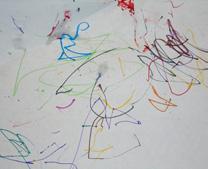





Not all wildfires are bad: Some wildfires are actually beneficial for certain ecosystems, helping to clear out underbrush and promote new growth. These are often called “prescribed burns” when conducted intentionally.
Fire tornadoes are real: These terrifying phenomena, called “fire whirls” or “fire devils,” are intense vortices of fire that can reach incredible heights and cause significant destruction.
The largest wildfire ever recorded: The Great Fire of 1910, which burned across 3 million acres in Idaho, Montana, and Washington, is considered one of the largest and most destructive wildfires in U.S. history.
Animals can survive wildfires: Many animals have evolved adaptations to survive wildfires, such as burrowing underground or fleeing to safer areas.
Smoke from wildfires can travel long distances: Smoke from wildfires can travel thousands of miles, impacting air quality and human health across continents.
Wildfires can release significant amounts of carbon dioxide: Burning vegetation releases large amounts of carbon dioxide into the atmosphere, contributing to climate change.
The first firefighters were women: In the early days of California, women known

as “Californian Firewomen” played a crucial role in fighting wildfires.
Wildfires can create their own weather: Intense wildfires can generate their own weather patterns, including strong winds and thunderstorms.
The color of smoke can indicate what’s burning: White smoke usually indicates that grasses or green leaves are burning, while black smoke suggests that hotter burning materials like wood or oil are involved.

Wildfires have been around for millions of years: Fossil evidence suggests that wildfires have been a natural part of many ecosystems for millions of years.

Email your artwork to editor@tsfcommunityvoice.com
Make sure to include your name, age and city. Entries must be received by January 27.
This type of contest encourages creativity, education and community engagement. It allows kids to express themselves through art, and it also provides an opportunity for their work to be showcased in the magazine.


Sponsored by: SMASH HOUSE BURGERS smashhouseburgers.com (305) 351- 9545

CRAFT. PAINT. BAKE. EXPERIMENT. ROCHEL 2172 - 2208 1,000 2,000 3,000 4,000 5,000

-3 Printed Aleph Beis Templates -A Magazine -Paint: Pink, Blue, Purple, White -Stapler -Popsicle Sticks -2 Sponge Brushes -A Small Paintbrush -Glue Stick -Aleph Beis Stencils -Glitter Paper: Pink, Blue, Purple, Silver -Pencil -Scissors

WIN A PRIZE!
Finish the weekly project, snap a pic, and email us at info@jcm.museum for a chance to win a prize. Let’s get creating!

When Yaakov asked Rochel to marry him, she agreed, but warned him that her father, Lavan, would try to deceive him by switching Leah for her. He assured her he could match Lavan’s deception by giving her a specific set of signs she would use to indicate it was her. When the wedding day arrived, Rochel realized her sister would be embarrassed when Yaakov would ask for the signs and she wouldn’t know them, so she gave over the signs to Leah. Due to her modesty (not revealing what she had done), she merited to have a great dynasty, including descendants Shaul Hamelech and Esther Hamalka.
Rochel Imeinu passed away on 11 Cheshvan. To this day, thousands of people flock to her Kever every year to daven on this special date.
According to some, Rochel and Leah were twins. Rochel was the younger of the two. After marrying Yaakov, she was childless for many years while her sister Leah and her two maids, Bilhah and Zilpah, had children. Eventually, she was blessed with the birth of Yosef, and then Binyamin. Sadly, she passed away in childbirth. She was buried alone on the road leading to Beis Lechem. Many generations later, when the Jewish people were exiled to Bavel, they passed by her Kever. There, they cried out their hearts to Mama Rochel, who pleaded with Hashem to have mercy on them.
We can work on developing the type of sensitivity that Rochel had. One way to do this is by being very careful not to embarrass people. For example, it could be tempting to tell a joke that will make everyone laugh, but will, at the same time, embarrass someone. In such a case, stop, think twice, and hold back from publicly humiliating this person.
How can you remind yourself to make sure that the words you say are respectful and considerate?

Measure out 1 Tbsp of water and 2 Tsp of baking soda into a small bowl. Mix well. Next, measure out 1 Tbsp of alcohol and 1 Tsp of turmeric into another bowl. Mix well and set aside.
Lay your colored piece of paper horizontally in front of you, and fold

the two top corners down until they meet in the middle of the paper. Press down the edges to crease them.
7

Unfold the triangle middle and refold over the two diagonal strips to keep
Fold the triangle down until it reaches the bottom point in the paper.


Dip your small paintbrush into the baking soda mixture and write a message on a sheet of paper. When you’re finished writing the message, set it aside to dry.

Fold the bottom of the paper up until it meets the folded edge.

You will now notice how the paper flares out, fold it in each side of the paper to form a rectangle.
Once your paper is dry, after approx. 20-25
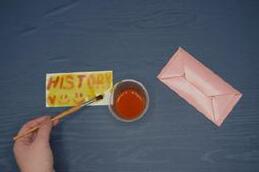
minutes, dip your larger paintbrush into the turmeric mixture and paint over the paper to reveal the message!

Fold the paper up again, using the thin gap as your crease guide.
9

them up to the right and left corners, keeping your paper in a rectangle shape.
11
Now you’ve got somewhere to keep your invisible ink cards!
Now take the center bottom corners and fold your envelope in place, then tuck the triangle in the center opening.

When you write with baking soda and water, the solution dries clear but leaves a trace. When you paint the paper with turmeric and alcohol, it reacts with the baking soda, turning a reddish-brown color. This is because the curcumin – a substance naturally found in turmeric – is a natural pH indicator, which means it turns a different color when it comes in contact with a base such as baking soda.
-1 Small Paint Brush
-1 Medium Paint Brush
-2 Sheets of Paper 5 x 2 inch (to fit into the envelope)
-2 Bowls
-1 Colored Sheet of Paper
-1 Tbsp Water

- Cut a regular size paper into two pieces that will fit in the envelope

By Yitzchak Steinberg, Adv. Specialist in US-Israel Real Estate Law
In recent years, we’ve witnessed a growing wave of American real estate investors showing increased interest in Israeli property acquisitions. As an attorney handling dozens of such transactions annually, I consistently observe unique challenges facing American buyers, particularly regarding transaction structures and payment timing.
A critical point that every American buyer must understand is the fundamental difference in payment requirements. While U.S. transactions typically require a 5-10% deposit upon contract signing, Israeli real estate practices demand significantly more upfront commitment. For existing properties, the initial payment won’t be less than 10%, and for new construction from developers (known as “kablan” purchases), the minimum rises to 15%.
Another significant distinction, which I’ve seen profoundly impact my American clients, lies in the payment structure throughout the transaction. Unlike the American model, which typically involves one large closing payment (after the initial deposit), Israeli real estate deals require multiple payments throughout the transaction period. For American investors, this creates an additional layer of complexity due to currency exchange exposure.
From my extensive experience, I’ve witnessed numerous cases where sharp fluctuations in the shekel’s exchange rate

forced buyers to contribute significantly more dollars than initially planned. This is a crucial consideration that must be factored into the transaction’s financial planning.
PROFESSIONAL TIP: I always advise my American clients to plan for a 10-15% reserve beyond the intended purchase amount to accommodate potential currency fluctuations.
Understanding these structural differences is essential for a successful Israeli real estate investment. As a specialist in guiding American investors through the Israeli market, I particularly emphasize the importance of proper financial planning and timing strategies to my clients who are looking to establish a presence in the Holy Land.
EXPERT
The Israeli real estate market operates under fundamentally different principles from those in Florida or New York. Payment structures that might seem unusual to American buyers are standard practice in Israel, and understanding these differences is crucial for transaction success.
These distinctions become even more significant when dealing with new construction purchases, where payment schedules can extend over several years. The impact of currency fluctuations over such extended periods can be substantial, affecting the total dollar cost of your investment.
CASE STUDY: Recently, I represented a client from Miami in purchasing a Jerusalem apartment. Due to shekel appreciation during the transaction period, what started as a $500,000 investment required an additional $50,000 to complete the purchase. This real-world example underscores the importance of proper financial planning and understanding the unique aspects of Israeli real estate transactions.
Yitzchak Steinberg is a legal expert specializing in representing foreign residents in Israeli real estate transactions. Over the years, he and his team have successfully guided thousands of international buyers through property acquisitions in Israel. His extensive experience spans clients from across the globe, making him a trusted advisor in navigating the complexities of Israeli real estate law for non-residents.
office@ys-law.co.il +972-2-5002923 Watsapp: +972-53-277-5431




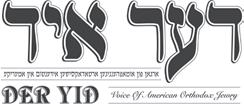





















































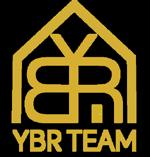
















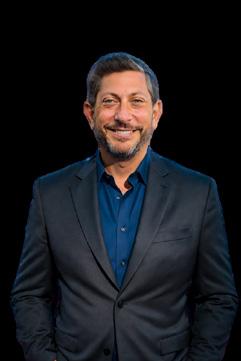



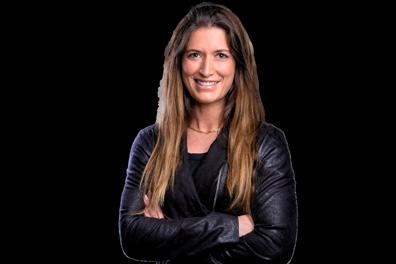

As January rolls in, the much-anticipated “Yeshiva Break” is upon us. Jewish schools across the tri-state area and beyond close their doors for about ten days, giving families a chance to vacation. But what should be a peaceful time has, for many, become a source of financial strain, social pressure, and even anxiety. While vacations are great for bonding, the reality is that the culture around yeshiva break often creates unnecessary pressures. Whether it’s the cost of extravagant trips or the unspoken competition to “keep up with the Kohens,” many families are left feeling anything but well-rested.
I’ve worked with many families who are struggling. Some are behind on their mortgage, many are juggling credit card debt, and others can barely afford tuition. Yet, they still feel pressured to spend thousands on winter vacations. Why? It often stems from the fear of being the only family who “didn’t go anywhere.” Parents don’t want their children to feel left out when classmates compare trips to Florida, the Bahamas, Israel, or the like. Paradoxically, while families try to create happy memories, the financial stress can cause tension and often overshadow the trip.
Going into debt for a vacation is never a wise decision. A break should refresh you, not leave you worrying about how to pay your credit card bills. Before planning a trip, ask yourself: Can I afford this without sacrificing financial stability? If not, it’s time to explore alternatives. And the pressure isn’t limited to parents. Children also feel the weight of this competition. A friend recently told me his child’s teacher went around the classroom asking
By Shmuel Shayowitz
where each student was going for break. Imagine how the child who’s staying home feels?!
This kind of messaging reinforces a damaging narrative: that your family’s value is tied to vacation plans. It’s critical to push back against this. Teach your children that their worth isn’t based on where they go, but on the quality of their character and the meaningful experiences they create at home or elsewhere. If you’re feeling the pressure of yeshiva break, here are practical ideas to make the time meaningful without financial strain:
Stay Local: Explore parks, museums, or winter activities nearby. Day trips can be just as memorable as traveling far. Turn your home into a vacation spot with extravagant themed movie nights, baking projects, family games (for prizes), or indoor camping adventures.
Limit Social Media Use: Seeing others post pictures of lavish trips creates unnecessary FOMO (fear of missing out). Limit their social media surfing and focus on your own family’s activities. If you are fortunate enough to get away, don’t let your kids post where they are or what they are doing.
Get Kids Involved: Let children help plan the break. Give them a budget and help them craft a reasonable “vacation.” They’ll feel more invested and excited when they are more involved in the process. Give them personal incentives to stay under budget.
Defer Your Vacation: Use the break to volunteer as a family. Helping others fosters gratitude and a sense of purpose. As an enticement, offer them a family trip at a different time, which will be much more af-
fordable. Knowing that they are going away a few weeks later will give them the self-confidence to say, “We did chesed now, but we are going to such-and-such place in February.”
Schools must also help by rethinking the structure of yeshiva break. Shorter vacations or staggered schedules could ease pressure on families. Educators should also avoid discussing travel plans in a way that creates unnecessary comparisons among students. The purpose of yeshiva break should be to reconnect as a family and recharge. That doesn’t require an expensive destination. True joy comes from shared moments, no matter where you are. By reframing the conversation and prioritizing what really matters, we can reclaim yeshiva break as a time of rest, connection, and contentment.
Would you rather have your kids take one two-week winter vacation or give them two days off each school month? Please email or message me to let me know your choice! Let me know if you have a good “Would you rather” question, and we will highlight your submission.
Shmuel Shayowitz (NMLS#19871) is a respected Real Estate & Finance Executive, Writer, Speaker, Coach, and Advisor. As the President and Chief Lending Officer of Approved Funding, a leading national mortgage banker and direct lender, Shmuel has facilitated over $3 billion of mortgages over the past two decades. Shmuel’s expertise spans various licenses and certifications, including specialized mortgage underwriter, licensed real estate agent, and accredited coach. His market insights and experience are highly sought after in the real estate, finance, and coaching industries. In addition, Shmuel is a seasoned real estate investor and property manager, facilitating thousands of rentals nationwide. Shmuel can be reached at www. approvedfunding.com/shmuel.










